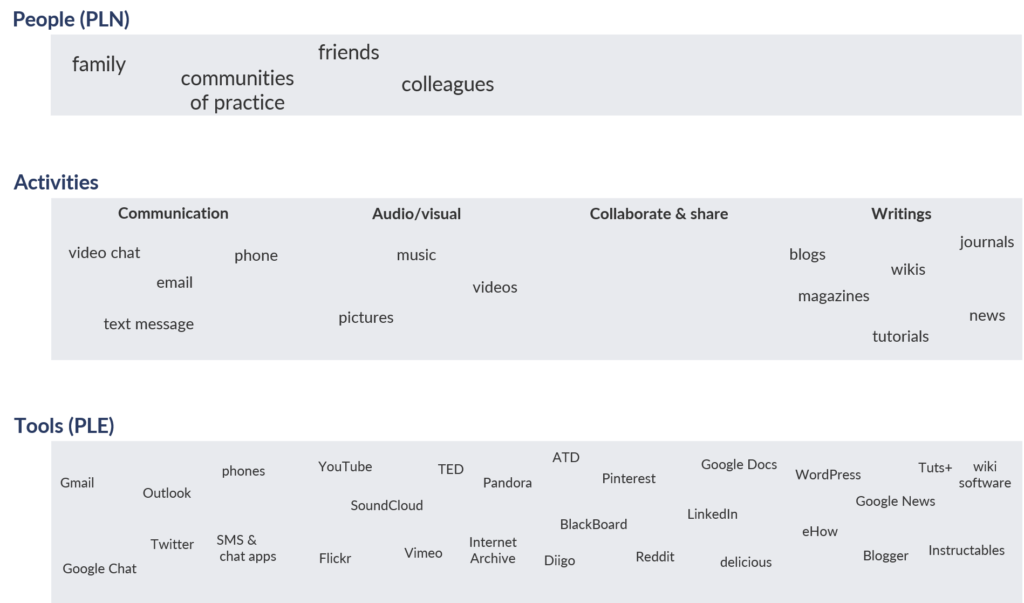Personal learning networks, the salons of today

Lecture de la tragédie de l’orphelin de la Chine de Voltaire dans le salon de madame Geoffrin, an oil painting by Anicet-Charles-Gabriel Lemonnier, is in the public domain. The painting shows a gathering of guests in the drawing-room of French hostess Marie-Thérèse Rodet Geoffrin (1699-1777) who is seated on the right. They are reading one of Voltaire’s plays, which is based on a 13th Century Chinese play named The Orphan of Zhao.
A personal learning network (PLN) is the group of people with whom you interact. You learn as a result of the connections to the people in your PLN. I believe this is a modern take on an older idea — that of the salon. This older idea, with its newer name, is often mentioned in conjunction with massive open online courses (MOOCs).
A personal learning environment (PLE) is, in a way, a container for the activities performed by the group of people.
- In years past, this was a room that was also called a salon. It might have been a common room in the house or even a bedroom.
- In today’s formal educational settings, the PLE may be part of a learning management system (LMS), which is also known as a virtual learning environment (VLE).
- In today’s everyday, informal settings, people often create their own PLE by using a set of tools that are not all corralled into a single setting. (And yes, they might use it in a common room in their house or even a bedroom!)
The idea of a group of people is old and unchanging. The activities performed by groups of people for learning and sharing ideas changes some over time but not always substantially. The tools used in today’s PLEs change constantly. This is what mine looks like today; how does yours differ?
See also
A similar argument is that a blog is similar to a salon; see Mortensen, T., and Walker, J. (2002) ‘Blogging thoughts: personal publication as an online research tool’.

